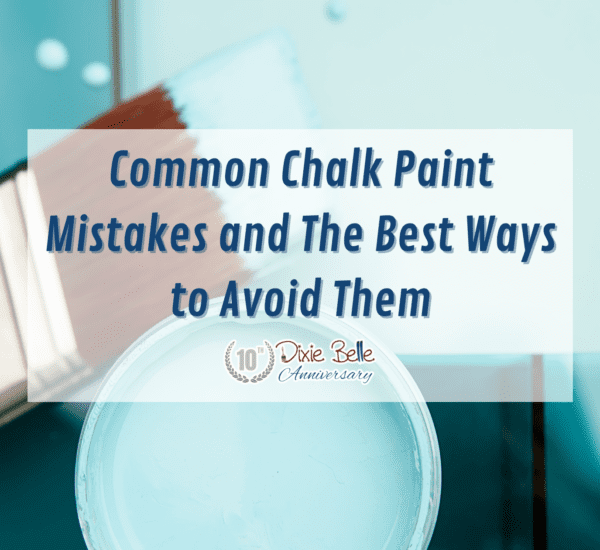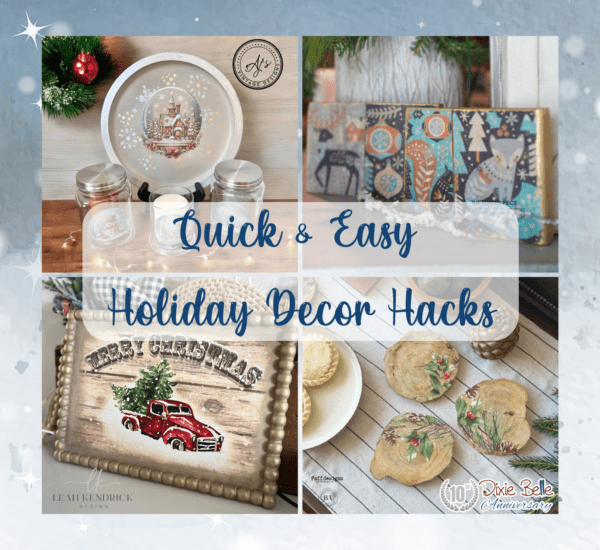Welcome to our blog! Today, we’re excited to feature Linda from Q is for Quandie, who will show us how she did a rusty pot refresh using Dixie Belle Patina Paint. Linda’s creative expertise and step-by-step guide will help you transform those old planters into stunning garden pieces. Let’s dive in and get inspired!
Dixie Belle Supplies:
(The following is an excerpt from Q is for Quandie. Read the full article here.)
History:
Back in 2019 I picked up a pair of garden planters made out of some sort of molded composite material.

I turned them into faux ‘rusty iron’ planters using Dixie Belle’s Patina Paint.

Iron paint and green spray were used to create a rusty look (you can find the details for that project here).

A protective top coat was not added to them. Dixie Belle does make a top coat called Patina Guard for the Patina Paint, but it adds a little too much sheen for my taste (you can read about that here).
Even without the Patina Guard, my pots have held up remarkably well considering that they have spent 5 years outside, rain or shine (or snow), hot or cold.

But sitting in wet snow or on damp pavement for long periods has taken a toll on the bases.

The upper parts of the pots still look good though.

So I thought I’d take advantage of some gorgeous, sunny weather we had back in early April and just touch up the bases.
Step 1:
I started by brushing away any dirt, and then I used a scraper to remove the loose paint from the base.

You’ll note that the paint peeled right down to the original substrate. When I purchased these pots they’d already been painted a dark brown. I have no idea what kind of paint was used, but that original layer of paint is what failed here.
Step 2:
The next step was to add a base coat of Dixie Belle’s Midnight Sky.

Dixie Belle does make a primer that is specifically for use under the Patina Paint…

You also can just use any of their chalk mineral paints for the same purpose. If you are applying Patina paint to metal, however, you should apply Prime Start first.
Step 3:
Once the black paint on the base of my pot was dry, I stippled on the Iron paint. Then the green activator spray was applied, while the paint was still wet.

Out of the three patina paints that are offered (Bronze, Copper and Iron), I find that the rusty patina with the Iron paint takes the longest to develop. Luckily I had some time between when I refreshed these back in early April and the actual arrival of gardening season here in Minnesota. Initially, these pots looked a bit two-toned (as you can see above), but the rust continues to develop over time. So don’t panic if you try this and immediately think it didn’t work at all.

Today’s q tip:
I’ve noticed that the addition of water will help speed up the rusting process. With outdoor items, I just leave them outside and wait for a good rain. But for indoor items I will often give them a spritz of water using my Dixie Belle Fine Mist Spray Bottle once the initial Green spray has dried.
It ended up taking a few weeks for the bases on my planters to rust up enough to match the rest of the pot.

But it looks pretty seamless to me now.
What do you think? Leave a comment and let me know.
We hope you loved Linda’s tutorial on refreshing rusty iron planters with Dixie Belle Patina Paint. Her tips make it easy to achieve beautiful results. Thanks to Linda for sharing her expertise! If you would like to try more Patina projects, check out this blog, How to Use Iron Patina Paint with Green Spray. Share your transformations with us, and stay tuned for more DIY projects from Dixie Belle Paint.





